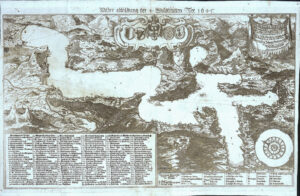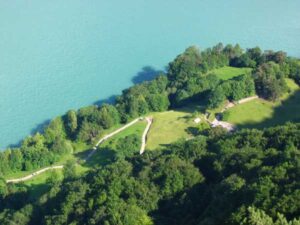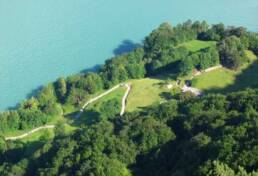Waldstätte and the “forest” cantons at the dawn of the Swiss…
“An artificial area where meadows, pastures, fields and forests are mixed” identified, from 1289, the territories of Uri, Schwyz and Unterwalden at the base of the Confederation…
Waldstätte is an expression referring to the three original cantons of the Swiss Confederation, whose memory has survived to this day: Uri, Schwyz and Unterwalden, the latter today divided into the totally independent “half-cantons” of Obwalden and Nidwalden.
Later, this term was gradually replaced by the specific word Urschweiz, although not having the same evocative power.

In 1291, the Waldstätte founded the so-called “Confederation of the III Cantons” on August 1 and drew up a pact in which they promised to protect each other against attacks from abroad and from within.
A fitting tribute to the country’s rural origins
The term is derived from the German Waldstätte, where Waldstatt refers to a forest site which, in a medieval sense, is an artificial area where meadows, pastures, fields, and trees are mixed together: the inhabitants are thus called “forest people” or Waldleute.
The word Wald (“forest”) is to be understood in contrast with Forst: using a German terminology quite obscure it refers to cultivated land with alternation of various agricultural activities, whereas the second one in the same language suggests deep and uncultivated forests.
The word Waldstette or Stette (in the sense of “site” or “wooded settlement”) is also used alongside Stett (Stadt, modern, or “city,” in the meaning of a powerful settlement, possibly protected with special rights) and Lender (“Länder” modern, in the meaning of rural countryside) in relation to individual confederate allies in the first half of the 15th century and was gradually replaced by the word Ort (“point”) or Stand (“State”), dominant until the French Revolution.

The term “canton” (Kanton), originally a Romance translation of the German “Ort”, was in fact unknown until about 1650.
A story that began, of course, in Schwyz
The first recorded use of the word Waldstätte specifically as a reference to the wooded valleys of central Switzerland, the heart of the country, is in a document from 1289, which mentions the “Swiz in der waltstat” (i.e. literally “in Schwyz, in the wooded site”).
Lucerne is mentioned as the fourth “forest canton” from the 15th century when the basin of the same name became the Vierwaldstättersee (“Lake of the Four Cantons”) within a hundred years, in a 1450 addition to Egloff Etterlin’s “Silver Book”.
Finally, during the Helvetic Republic (1798-1803), at the behest of Napoleon Bonaparte, Uri, Schwyz, Unterwalden and the Canton of Zug temporarily formed the Canton of Waldstätte…






